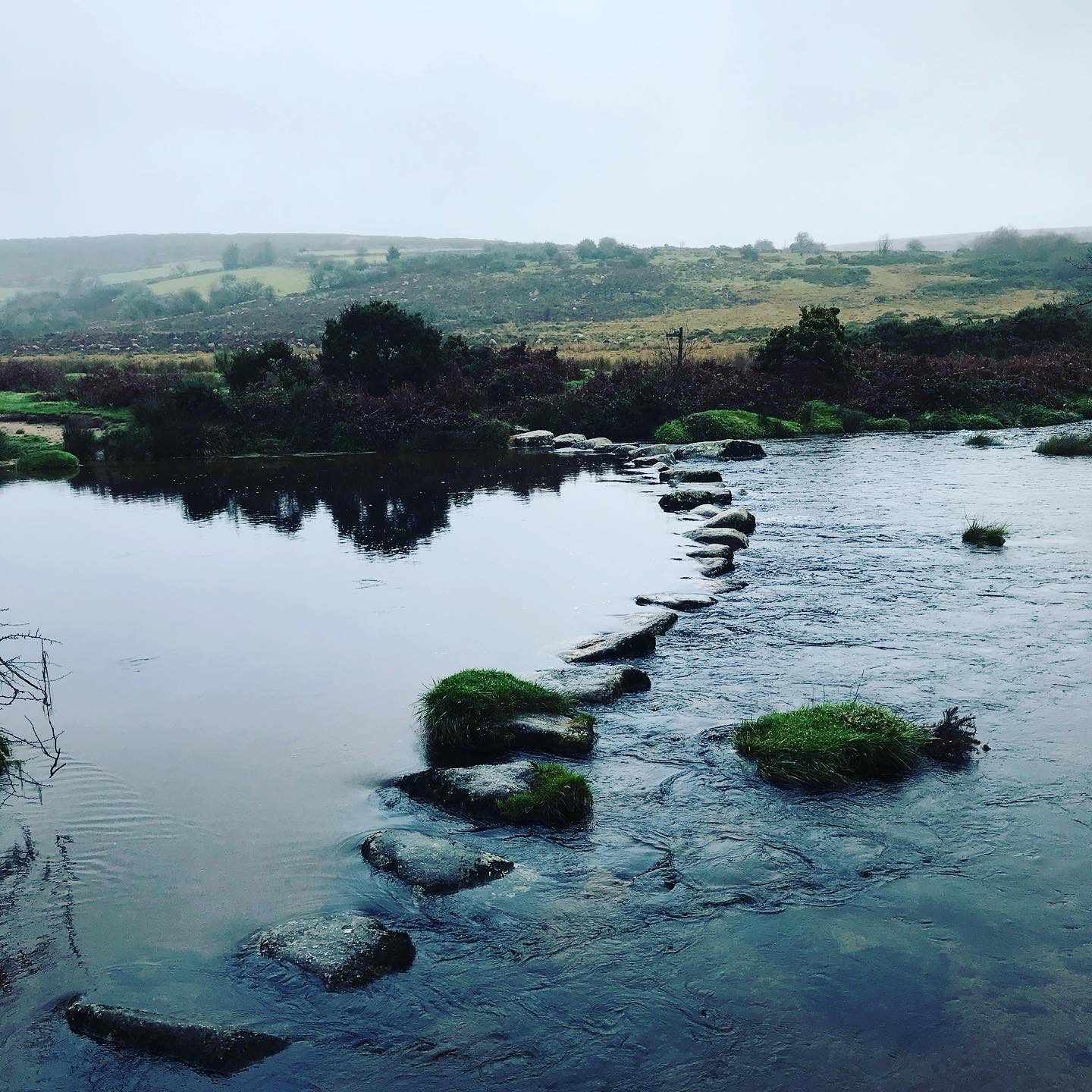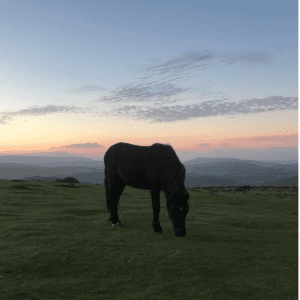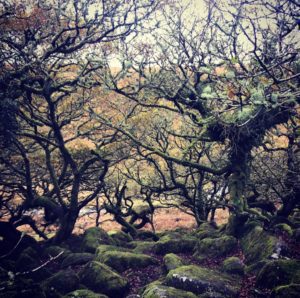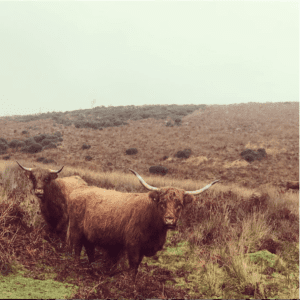I was talking to my mum, a little prematurely, about what I might do when my tenancy is up at my current house. I’m not quite sure how we got onto the topic as originally we’d been talking about the time we went on holiday to Dentdale in Yorkshire and the bedsheets had icicles on them and I fell asleep in my dinner because I was so tired from walking so far during the day. “We all watched your head very slowly fall, until it landed in your fish fingers and Brussels sprouts,” my mum recalled. Maybe this topic led me to express my desire to explore more of the north, to be in places like that again, and my reservations – what with being fundamentally designed like a lizard – about the cold. I’m not sure. Anyway, I told her about all the options percolating in my head in preparation for the time when I am not allowed to be in my current house – which is in Somerset – any more: my desire to try another totally new place, the strong connection to the south west of the UK that I can’t seem to kick, another desire – not quite fulfilled in my three and half months in The Peak District last winter – to be closer to where I’m from.
“Where are you from?” asked my mum.
She was being a bit disingenuous, since she knows where I’m from and played a not insignificant part in making me from there, but she had a point, too. I’ve now spent a greater portion of my life away from the area where I grew up – the Nottinghamshire-Derbyshire border – than I spent growing up there. Since then, I have lived in six distinct regions of the UK. Maybe the truth is that I am from lots of places now.
But of those places, which do I know mostly intimately? I’m surprised to find the answer is Dartmoor, in the heart of Devon. Surprised, perhaps, because it still excites me, in the way a totally new place might. It was only five years ago that I first moved to Devon but Dartmoor was seducing me long before that, and in those five years I have walked more on and near the moor than I have walked in any other place. Over last spring and summer I lived a stone’s throw from its edge, close enough to get its weather, all of its rain and wind, and a bit of snow, thumping the back wall of my tiny wooden house. I almost moved onto the moor itself after that, but instead moved here, eighty miles north east, but the moor still has its claws in me, and I guess I must miss it because when I came over the big hill a few weeks ago – Haldon, the border hill – and saw the moor ahead on my right, I let out a spontaneous cheer, which was also a kind of gasp. The moor had put on its best jacket for me. Mist – a special Dartmoor mist which is also cloud – was strung across the lower part of it, with shafts of sunlight penetrating it diagonally from what, impossibly, seemed like four or five sides, as if Dartmoor was in fact a totally different planet, with several of its very own suns. When I arrived in the car park just west of Haytor the cloud was five hundred feet below me and the sky was clear.
I followed the stone rails of the old quarry around the back of the tor into a quiet, boggy place. Hundreds of tourists climb Haytor every weekend, often accompanied by their dogs. A couple of years ago a friend’s friend’s dog fell off the back of Haytor. A vet a few miles away in the town of Bovey Tracey told the friend of a friend that it was not an unusual event: they got about twenty dogs a year in there who have been injured or killed as a result of falling off the tor. I have been known to borrow friend’s dogs for walks but chose not to bring one to Haytor. It felt a bit lazy of me to choose a walk here, in what you might describe as the more commercial part of the moor, especially as there is much of the bleaker north moor that I still do not know well, but every popular and busy part of Dartmoor is close to a quiet part of Dartmoor that can feel totally your own, and Haytor is another example. I have walked so much around this eastern part of the moor, but I had never before today followed the tracks of the granite railway leading from the quarry. In the 1800s, granite was transported from here, all over Britain, being used in the building of several famous London structures. If you have walked across London Bridge, or through the British museum, you have walked on some of Dartmoor. Of course, doing that would not actually feel like walking on Dartmoor, which to me always feels like getting a big hug from a benevolent monster.
My soundtrack for the few recent trips I have taken to Dartmoor has been Townes Van Zandt – particularly his Our Mother The Mountain album, and an anthology that came out a while ago that I found on my parents’ iPod. There’s a very shocking moment on the anthology when there’s a jump from the songs Townes wrote in the early 70s, directly into ‘Marie’, a ballad he sang with Willie Nelson in 1990. The first time you hear it, you wonder when Townes will start singing, and then you realise he is already singing. That deep burnt sound, like ash cleared out from a grate and compacted into song, is him. I cannot think of another musician whose voice changed more dramatically in the space of less than two decades. He sounds as old as a tree in Wistman’s Wood, as old as some moss-coated clitter in a ravine below the shadow of a tor. He is, in fact, at this point, close to his 46th birthday – just seven years from his early death. I will be the same age in three years, but when I walk on Dartmoor, I often feel very young. It’s something about the intoxicating quality of the air. It’s air in which lichen thrives: air that makes wooden footpath signs and boulders look old but makes people feel young. I don’t know that it actually makes people look any younger. Probably, if I spent enough time up there, my face would end up covered in lichen too, just like a wooden footpath sign or a boulder, and I do not fear this. I would enjoy stroking the lichen on my face, while deep in thought. At the end of December when I walked along The Two Moors Way in a quite thick fog, I felt young and bouncy, maybe a tad younger because of the all-pervading oldness of my surroundings, and it made me wonder what it would be like to be immediately transported into my seven year-old self, when I was possibly at my most bouncy. How shocking would it feel? How amazing would it be to find out how far, how gradually, you’d leaked away from who you once were? I suspect that if the 46 year-old ash-voiced Townes Van Zandt was translocated into the body and mind of his seven year-old self, or even his twenty eight year-old self, it would be even more shocking, were it not for the fact that Townes Van Zandt seemed like a very unshockable kind of person.
The fact of Townes’ Texan heritage does not stop his music being perfect for Dartmoor in winter: it has just the right level of devilry, just the right amount of mountain and hill obsession, just the right whiff of old death and eternity. One Townes song I listen to a lot is Waiting Around To Die, in which the narrator, embodied by Townes, has trouble with his violent father, a duplicitous woman, trains, wine and prison, before finally finding a friend he can trust, in the form of codeine. My mum, who also likes the song, thought it had a much happier ending, having not realised Townes was saying “codeine” and thought he was just talking about a man with an unfamiliar American name who was quite nice. The other Townes songs I listen to most regularly are Lungs, Snake Mountain Blues, Our Mother The Mountain and Kathleen, which is about the imminent prospect of being reunited with someone called Kathleen, who is apparently deceased. Kathleen was the name of my great grandma, who lived on Dartmoor until her early teens. I only found out this strand to my ancestry around the time of my move to Devon and immediately got excited at the idea that it might mean that I am officially part-witch. I haven’t been able to confirm this, but I have found out that Kathleen – who died around the time I was five, spent a lot of time at the bookies, and who I remember primarily as a big grin in glasses – was born in the Newton Abbot workhouse, her family were tenant farmers who made food for Dartmoor Prison, and there is a significant possibility that her biological father was not my great great granddad, Thomas William Manning, but the former employer of her mum, Ellen, at the house where she was in service in Newton Abbot. When the family moved to Nottingham, Ellen caused quite a stir by gaining a reputation as the only woman in the neighbourhood who went to the pub on her own.
I wrote half a long chapter about Dartmoor, and about Kathleen, for my latest non-fiction book, 21st Century Yokel, but decided to cut it from the book, late on. It was the right decision: the book would have been too long with it in, and there are already too many overlong books in the world. I now see the chapter also needed more time to ferment. But the problem with fermentation, at least when it applies to writing, is it can sometimes have no limit. When I write a book, I like to faff and walk and read – and very rarely in a rigorous or organised way – before the final, possessed burst when I finish getting all my words on paper, just in time. But in reality, I could go on researching Dartmoor forever. There would always be more to know. It is my job to put a limit on this because nobody else is going to do it for me.
I have enjoyed my extra research on the moor, and feel convinced it will be of benefit, however small. I realised that I wanted to write about Widdecombe In The Moor but that I had never approached or left the town on foot on the north west side, so I did that. In doing so, I found long posts that had been hammered into in the ground up on the ridge leading to the Bronze Age remains of the village of Grimspound, and learned that they had been put there by the Home Guard during World War II to make it more difficult for German parachutists to land: an idea eccentric and random enough to seem worthy of the team working under Captain Mainwaring. I looked west where, if I walked a few miles, I would find the road from Princetown to Postbridge where, in the early to mid-20th Century, phantom hands, thickly covered with hair, were known on several occasions to pull cars, horses and cyclists off their path. In the woods around here, there are red warning signs, in which a large hand forbids walkers to follow paths where dangerous tree work is happening, but which I always think of as signs telling me to beware of phantom hands. A couple of miles north is the Warren House Inn, where it is said the fire has never gone out but where my friend Pete met a man who claimed that, while drunk one Saturday night, he “pissed it out”. Twist a couple of miles in the opposite direction and you find the road where a cow fell of a ledge onto my friend Mike’s car, totally writing the car off, but walking away unscathed. Carry on down the hill and there is the former site of Snail House, where two women allegedly lived, eating nothing but snails, for many years, in the 1800s. Pass the point where the East and West Dart rivers crash into one another, near my favourite Stepping Stones, and head up the opposite side of the valley and you’ll find the place where in 2015 I helped rescue a pony who’d got stuck between two rocks. It’s very murky on the ridge above Grimspound, and I can’t see any of this, but I know it’s all there. I know this place better than I sometimes give myself credit for. I feel comfortable here, not even slightly scared, despite the weather. But I don’t feel anything close to tired of it, can’t conceive of a time when I will feel that I have learned all I can learn about it, when there won’t potentially be something else magical to discover just over the next hill. I don’t know if this is the most traditional definition of ‘Home’ but it’s one I can quite happily live with.
My Dartmoor episode of Ramblings with Clare Balding can be found here.
I don’t write for any mainstream media publications and chose to put my writing on this site instead: around 200,000 words of it so far. It’s all free, but if you feel like donating a small monthly amount to help me keep going, you can do so either by paypal or GoCardless. You’ll also find a subscription link on the home page if you’d like to sign up to be notified when a new piece is published.
My latest book is called Help The Witch. I also have just a few signed copies here: if you’d like to order one of these direct from me, email me via this form.
My new non-fiction book, Ring The Hill, is now funding for autumn 2019 publication.
My previous non-fiction book, 21st Century Yokel, is now available in paperback.





???????? Love it! I’ve tried to read all the science-y and archaeological articles I can find, to try and understand why Dartmoor has such dramatic climates and strange/varied landscapes, despite being such a relatively tiny place on a relatively tiny island with relatively little grade change, and I’ve never really found a satisfying, logical answer. Where I live, I could walk 500 miles in any direction and maybe still not be able to tell if I’ve gone anywhere. Walking from the center of Dartmoor to the edge, though, is like seeing 13 countries at once, and you’d probably miss some others along the way, too. I’ve been to lots of fantastic tropical places with better weather and less mud and no stinging horizontal drizzle in summer, but Dartmoor just took up residence in my head and said ‘this is your fantasy, deal with it. Hope you like ferns.’
I hope you choose to stay in Dartmoor. When you write about it you seem so enraptured as if you are so entwined in a romantic adventure. I believe that here is where your best writing occurs.
‘Kathleen’ is an incredibly atmospheric song and listening to it on Dartmoor shows an indomitable spirit. I’d be terrified as that icicle of descending strings happens. There’s definitely something that connects you to the south west, whether it’s your witch-past or just your love of it. Your descriptions of spring arriving there are a refuge for me in November and December.
Great piece Tom, as always. Have you ever been to Orkney? It’s a wonderful place, astonishing landscape, sea, folklore, legends and archaeology. But more than anything it has the ability to get under your skin in a way that, it sounds to me, that Dartmoor has to you. It’s a liminal place and many people who come once end up coming back to stay. I hope you find the place where your heart is happiest, if you haven’t already
Great piece of writing Tom. Love that your mum thought codeine was a person. I’ve never been to Dartmoor, but I can imagine it with your writing, very evocative. Have you ever thought of the Scottish Highlands? It gets under your skin, like Dartmoor has with you, although I’m with Hayley on Orkney. I haven’t visited yet, but I feel its drawing me in as well. What is it about the call of wild places to our heart?
Love how this piece makes me want to visit Dartmoor again. As far as Orkney goes, once is not enough. To appreciate it, it helps to like wind, archaeology, birds, and endless skies. Very few trees though.
Lovely piece Tom. You are so right, Dartmoor gets into your bones with its menace and mists and magical sense of space and history. I’ll be talking about it, Devon landscape and my novel The Lie of the Land at Exeter Customs House on July 4 if you are interested.
I laughed at your ‘cow on the bonnet that walked away unscathed’ anecdote. I have actually seen this happen to an unfortunate motorist, on the Princetown to Tavistock road in the dark, coming back from the pub. It is the contrast between the nonchalant cow running off and the devastation caused to the vehicle that sticks in my mind.
Your writing always makes me think of things…. When I am coming home after going ‘up country’ and I turn off the A30 and see Sourton Tors on the left of the road, it always makes me think ‘Yes!! I’m back!’
Trekked across Dartmoor as a kid, unforgettable experience. But don’t forget Kernow. Interesting leylines at the altar of St. Tallunus.